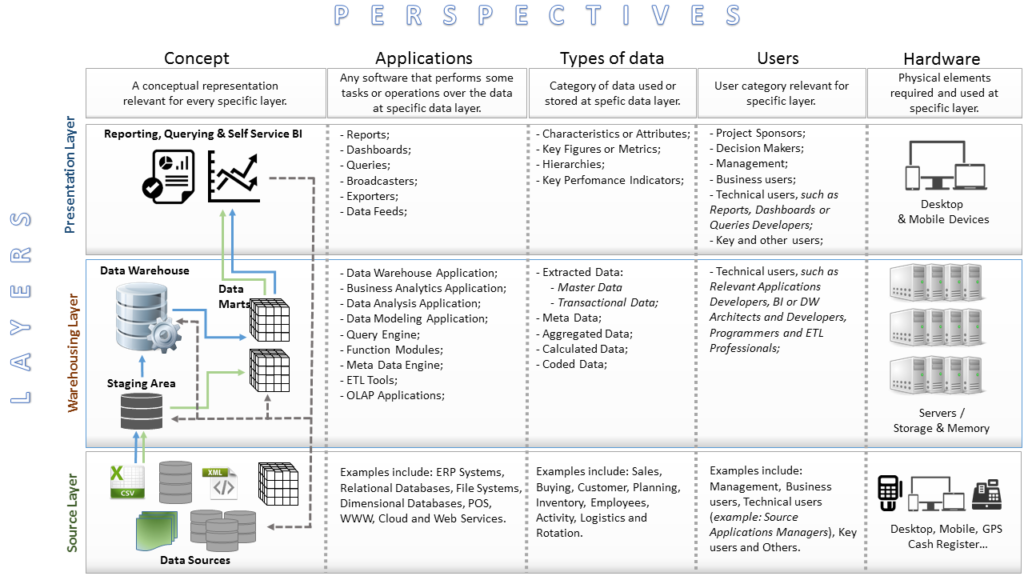Business Intelligence (BI) is a very compex field of science/industry, which is very hard to understand and very easy to misinterpret – especially for people that are not domain experts in this field. BI aims to convert complex data into information and knowledge to help knowledge workers and managers better understand, analyze, and develop a competitive business strategy. Those working in this field are very aware of the difficulty translating BI business requirements to the technical side and explaining why some technical implementations are so complex, requiring huge amount of resources to fullfil specific business requirement.
In every BI relevant project, it is important to identify the components and aspects of BI environment that would be affected by the project and which might need to be modified. This is a very complex task, as it is difficult at the begining to identify all the elements that make up a BI environment and to identify relationships and dependencies between them.
To support the process of identification of the elements of BI enviroment that could be affected or modified by respective project, I* developed A Holisitic Framework for Business Intelligence (HBIF) as a part of one project at the Staffordshire University. HBIF is a result of the work covering more than 12 months and enaging more than 130 Business Intelligence and Data Warehousing experts from 27 different countries.
The main focus of HBIF presented as Figure 1 was to explain the complexity of BI in one picture, while in the same time enabling immediate understanding of BI environment for those working outside this field.
Figure 1: A Holistic Business Intelligence Framework (HBIF)
Figure 1 presents the HBIF, which comprises two views: layers and persectives. In the vertical view, HBIF is separated into three layers: source layer, data warehouse layer and presentation layer. The vertical data-based separation of layers is a well-established approach with a basis in the theoretical foundations of BI (Inmon, Kimball, etc.). The three-layered approach enables us to identify components and aspects at a specific data layer when working with the BI environment. For example, it enables identification of relevant concept, applications, hardware, types of data and users at data source level. It follows typical data journey in BI environment.
I have extended this traditional vertical and data-based three-layered separation with a horizontal presentation of the BI environment/ecosystem . This enables us to see the layers in the wider context of the BI environment. As an example, the Resource Manager for a BI project needs to understand the hardware, applications and user requirements of the project in order to be able to plan. Each perspective must be clearly defined in order to support optimal acquisition and supply. The framework enables an overview of the resources required at different stages, for example implementation at the storage (warehousing) layer or presentation layer. The framework structure can support users with different requirements. IT Management, for example, might be interested only in a high level view while implementation teams, and in particular, teams dealing with hardware infrastructure and those providing applications can use the framework to focus only on the field of their interests and expertise in the project.
The framework can be used as a stand alone representation of the generic BI environment and also provides the basis for an exploration of the wider BI environment.
To find our more about the process of developing HBIF, about each perspective, layer, or element, please check Chapter 3.4. of my publication, which can be downloaded for a free from British Library or Staffordshire University website.
* Despite the fact that the development of the framework was entirey my own work, it wouldn’t be possible without huge support by Dr Clare Stanier, Prof Dr Bernadette Sharp, and Dr Russell Campion.
